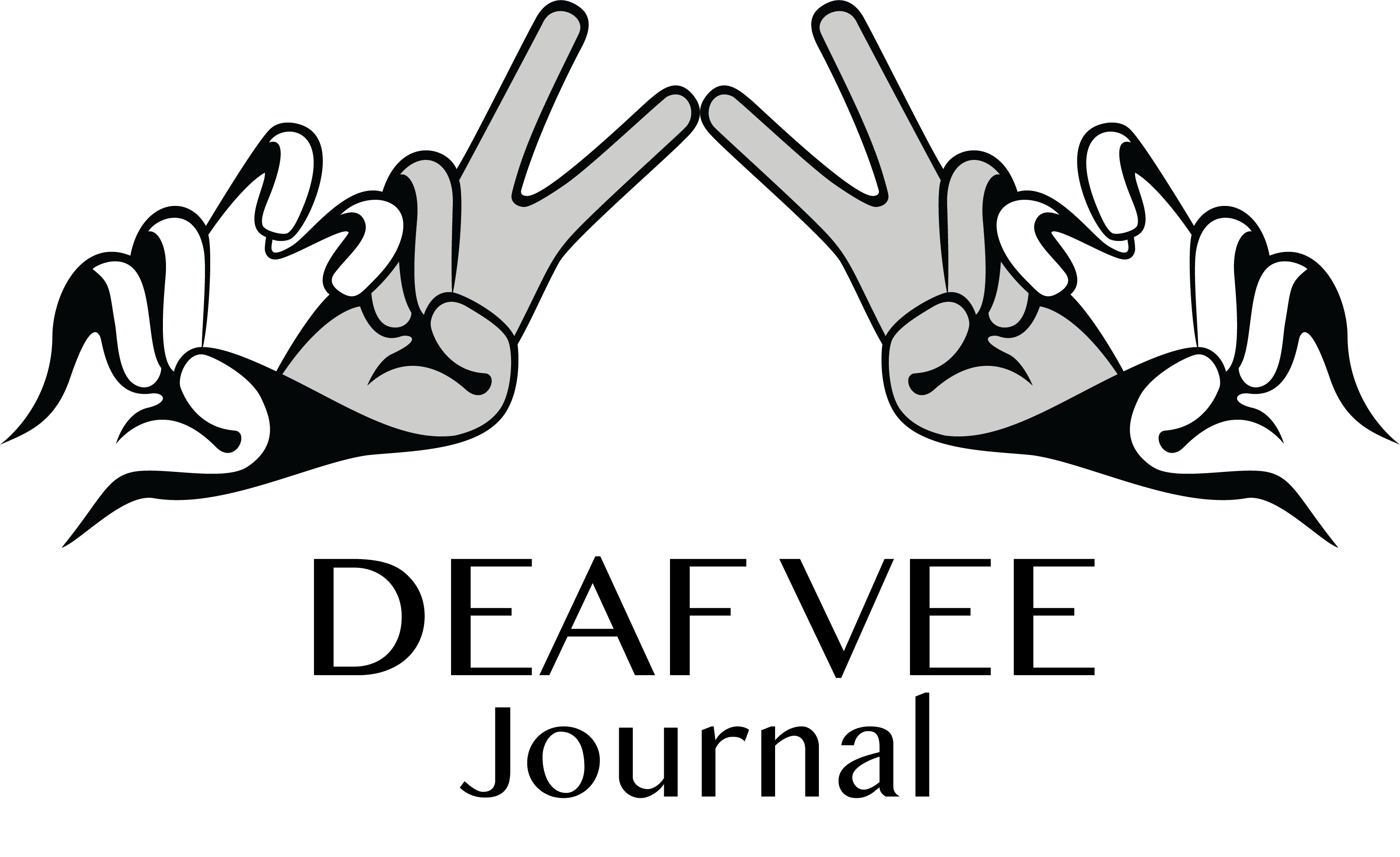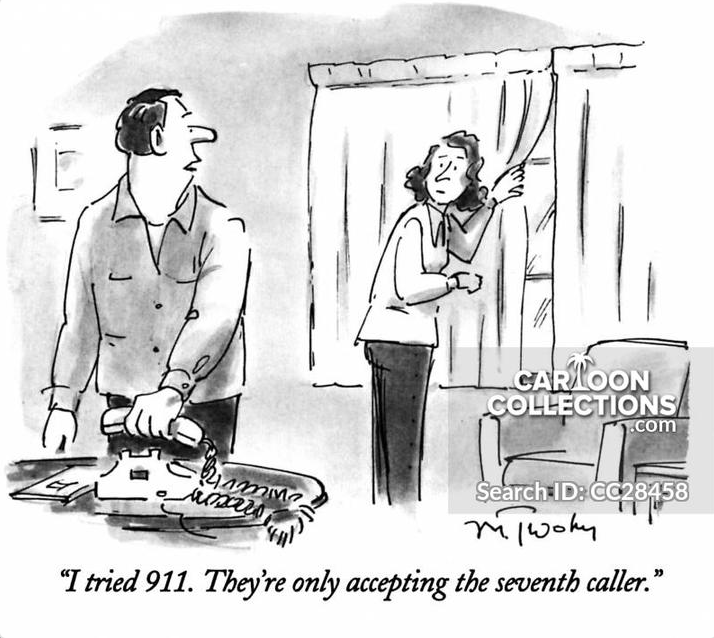[The video is in American Sign Language, as a signed translation of the Canadian Association of Sign Language Interpreters’ Intervention that was submitted to the Canadian Radio-television and Telecommunications Commission as of June 30, 2021. Mary Pat, our Editor in Chief, is a light-skinned feminine-presenting person shown seated in a long-sleeved black tee shirt with her brown hair pulled back in a ponytail. A dark background is behind her.]
Full Text of CASLI’s Intervention
The Canadian Association of Sign Language Interpreters [CASLI] is a non-profit, professional association for interpreters both hearing and Deaf whose working languages include a sign language. On behalf of our 850+ members across Canada, we wish to share some feedback we collected regarding the Video Relay Service under CAV as our members are stakeholders as well as users of VRS.
Generally:
Video relay is a crucial part of the Deaf Community, it is essential and needed.
Canada is finally providing services for our Deaf Community that are decades in the making for other countries.
This is an essential service for ALL Canadians and it’s high time that we are among the leaders in communication services for members of our Deaf Communities.
VRS empowers and allows the Deaf/Hard of Hearing community to participate in all types of personal, business and educational calls. They can have clear phone conversations with doctors, pharmacists, job interviews, team meetings etc where previously misunderstanding via written/typed English occurred or they would not be able to participate. They can speak to their family from near or far and have smooth meaningful communication. A Deaf person can be hired for a broad number of jobs because they can communicate with customers and team members via VRS.
Consider working with all the VRS providers in North America to maximize the best equipment and services that enrich the lives of Deaf/HoH/D-B and create more employment for interpreters.
Good service thus far. Faster response time is much desired.
Thank you CVRS for providing such an essential and important service to Deaf and Hard of Hearing Canadians. As the service continues to grow and expand, CVRS will be able to see the many benefits that the service provides, in terms of inclusivity of Deaf and HOH Canadians into their communities, this includes their employment, communication with family members, daily community interactions, as well as with friends. Thank you again for providing a much needed service.
Areas for Improvement:
Education:
Decisions are being made by groups who don’t have the context or understand the ramifications of their changes and policies.
Educating the Deaf/HoH communities about the role of interpreters, how it differs from the role of a translator is paramount. As things are now, many Deaf/HoH stakeholders are getting into the very bad habit of viewing, and then treating interpreters as their personal secretaries. When we do not behave as such, they file complaints with CAV. These complaints get filtered down to the managers of the companies providing VRS. Then discussions must be had. It is a huge waste of time and resources. CAV, SLIAO and CONVO are multi-million dollar resources that have been simply “handed” to anyone and everyone without any real, concrete education and training as to how to appropriately use them. Your most expensive resource is interpreters. We are being used and abused. You will have a crash and burn, just like what happened in the US, if changes are not made SOON!
Canada Video Relay Service is understaffed and unable to organize community outreach. Community members (Deaf, Hard of Hearing, interpreter agencies, and Video interpreters), are not receiving adequate communications and education. Many Deaf callers do not know how to use the technology, nor have knowledge or understanding of CAV policies. As a result, Video interpreters are seen as oppressive and appear as a policing agent when adhering the CAV policies and procedures.
Institutions, such as government, financial, and any services requiring security authentication are mostly deemed as fraudulent. This is due to a lack of outreach education from CAV and the CRTC. There is no regulation in place requiring any institution to allow VRS calls. This puts insurmountable roadblocks and oppression against VRS users, as it obstructs access.
If we call Service Canada – they don’t use third parties in fear of the Privacy Act, yet the VRS is truly considered a third party because of possible privacy breaches.
Communication:
There needs to be more consultations with the interpreters providing VRS.
CAV needs to be in regular communication with all registered users, instead of placing the onus solely on VI’s to disseminate information. Interpreters are the ones who are taking the brunt of the frustration of Deaf callers (issues with the platform, long queues to connect to an interpreter, tech glitches, etc). This past year has been challenging for everyone – and VI’s are on the edge of total burnout.
CAV would be well-served in working more closely with the main stakeholders: the Deaf community and the companies providing the interpreting services. And this requires care and attention to communication in ASL and LSQ.
One of the biggest areas of improvement needed is around communication with the Deaf community. Specifically, communication about the user agreement in what callers can and can’t do. This information was never communicated broadly in ASL and LSQ and, as such, explaining the policies or requiring callers to adhere to the policy lands on the frontline service providers – the interpreters. The user agreement should be available in ASL and LSQ so callers know what they are signing. Each item should be a separate video so callers can easily check what the policy states. Further, when CAV changes a policy or reminds callers of a policy that existed but was not regularly enforced, this information should be sent out in ASL and LSQ. Instead, current practice is to have the interpreters advise the callers of the policy which adds stress to an already demanding job.
Another invasive item is if there is a complaint made – the managers and staff have the right to look back at the video call for “ quality and purposes “ or even to clarify the complaint – the calls should not be recorded – again COE issues
And the fact that Deaf consumers are NOT told before with each call that their discussions are being recorded is causing issues in the community and we are no longer trusting interpreters.
No one understands the contract agreement when they sign up as it is all legal language, PLUS it’s not accessible in ASL / LSQ
So they don’t know PLUS they sign up because they need the service so they accept whatever they can get but now are getting policed
Please have CAV add to their policy a reminder that calls are recorded for quality purposes.
Service:
A major concern is the restriction of not being allowed to use Deaf Interpreters (DIs) in video calls. Oftentimes some Deaf/Hard of Hearing individuals need the services of a DI and oftentimes the interpreters need assistance. So the current understanding is that users cannot have DIs because CAV doesn’t recognize the need for it. Apparently there is fear that the CRTC would not approve of such an important resource, however, working with Deaf Interpreters is considered best practice for effective and clear communication.
Need to greatly improve the technology, especially the ability for 2-way calling – Deaf to Hearing and HEARING TO DEAF which is lacking.
Deaf callers and interpreters deal with the deficiencies in the platform every day – dropped calls, outages, technical problems (audio, video, phone tree numbers). Also, the platform does not prioritize a transfer. When it’s busy, callers and interpreters need to wait unnecessarily to have the call transferred to another interpreter resulting in disruption to the flow of the call.
Responses from Customer Service to the callers need to be consistent. There has been correspondence from Customer Support that does not align with the Policies and Procedures Guidelines for Interpreters. Recently a Customer Support agent told a caller (in writing) that they can request the Video Interpreter transfer the call to match their gender request. This is not within the scope of the current service and contradicts what is in the VI guidelines. This is one of several examples.
Some of the policies established by CAV are in direct violation with interpreter’s Code of Ethics (COE) such as reporting someone who is calling from a different account and as a result video interpreters are seen as oppressive and appear as a policing agent when adhering to the CAV policies and procedures. Even reporting when a Deaf user is basically calling ( in the past to score from their drug dealers etc) it goes against Confidentiality in the COE. Interpreters are hired by agencies for community work if such a case occurs they would and should keep it to themselves .. now they have to report it?
The wait is a bit long for interpreter availability.
According to the Accessibility Canada Act, the federal government has agreed to work toward the endgame of “barrier-free” across the board of federal agencies by Year 2040. Instead of waiting many more years, CRTC has so far led in appropriate measures of provision of communication accommodations through interpreted media broadcasts. Virtual interpreting services are here to stay, even after the pandemic! Technology for virtual interpreting has much more room for improvement in terms of picture quality with the moving hands across the monitor, preventing a good quality of picture.
Thank you.




